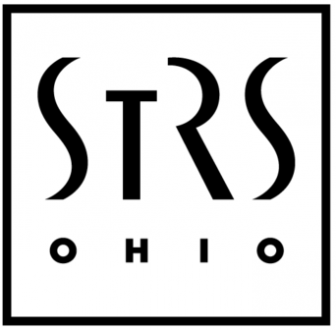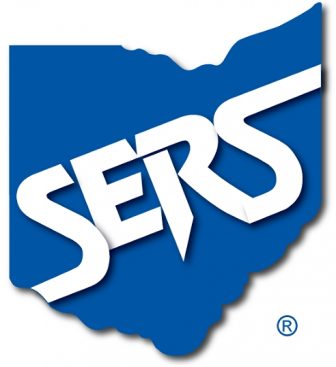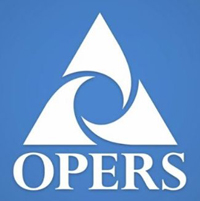December 2019 OEA Retirement Systems Update
SERS Fills Employee-Member Vacancy
At its November Board meeting, the SERS Board elected Matthew King to fill a board vacancy for an open employee-member seat. King is the treasurer and chief fiscal officer at East Central Ohio Education Service Center. He has previously served as treasurer for the Barnesville Exempted Village School District and as an assistant auditor for the Ohio Auditor of State. King’s term for this seat will run through June 30, 2020. The same seat is up for election next year.
Additionally, members of the SERS Board will select someone to fill a vacancy for an open retiree-member seat on the Board. Three candidates have been selected to be interviewed for this vacancy. The candidates are Robert Hancock, Timothy Penton and Frank Weglarz. The Board will interview candidates and discuss their qualifications at its December meeting. The candidate who receives a majority vote of the Board will fill the open seat with a term running through June 30, 2021.
OPERS Board Considers Health Care Allowance Changes
The OPERS Board continues to consider changes in the health care plan that would take effect in 2022. At its November meeting, the Board heard a presentation from OPERS staff regarding future Medicare and pre-Medicare allowances for health care.
Regarding Medicare retirees, OPERS staff noted that the average balance of an OPERS retiree’s health reimbursement account is over $3,700. More than two-thirds of the Medicare eligible retirees are enrolled in a Medigap plan with premiums that range from $152-$240. Approximately 25% enroll in a Medicare Advantage plan with the most popular plan being the Humana Choice PPO with an average monthly premium of $155. OPERS staff is recommending
lowering the monthly base allowance for participants in the OPERS Medicare Connector from $450 to $350.
Regarding pre-Medicare retirees, the Board has been discussing converting to market-based coverage rather than continuing to sponsor health care coverage. Currently over 25,000 retirees are enrolled in OPERS-sponsored coverage. Most receive an allowance of 75% of the $1,306 premium, meaning they pay $327 a month. OPERS staff is recommending an initial base allowance of $1,200 that may decrease over time. It should be noted that premiums in Ohio range from $570-$1,235 with higher costs in rural counties.
The OPERS Board will continue its discussion on all components of health care in January in preparation for a vote early in 2020.
![]() Click here to download a copy of this December 2019 Report to the OEA Board of Directors
Click here to download a copy of this December 2019 Report to the OEA Board of Directors
October 2019 OEA Retirement Systems Update
STRS Shows Modest Improvement in Funding Status
At its October Board meeting, the STRS Board received the results of the annual actuarial valuation of the pension plan for fiscal year 2019. The report showed actuarial liabilities (the value of benefits owed to retirees and active employees) of more than $97.8 billion and assets of $74.4 billion. The result is $23.4 billion in unfunded liabilities and a funded ratio of 76.1%. This represents a slight improvement from the previous year when it was 75.5%. Likewise, the amortization period (the amount of time needed to pay off the unfunded liabilities) was reduced to 16.6 years. This period was 17.8 years according to the FY 2018 valuation.
STRS continues to work toward improved funding of the pension plan. Keeping pension benefits secure for the long term is in the interests of OEA members and this has required shared sacrifice. Active teachers have had to work longer, contribute more and see formula reductions, while retired teachers have been dealing with frozen cost-of-living adjustments. However, as financial conditions improve, OEA supports restoration of COLA benefits as well as a reduction in the employee contribution rate.
The STRS Board also received the actuarial valuation of the health care plan. That report showed that health care benefits are more than fully funded with a funding ratio of over 174%. However, this figure is based on design changes to the plan that include elimination of the Medicare Part B premium reimbursement and freezing the subsidy amount for non-Medicare retirees at 2020 levels. These changes have yet to be implemented and the STRS Board is expected to review health care plan design in February 2020.
SERS Board Receives Preliminary Funding Report
On Thursday, October 17, the SERS Board received a report from the actuarial firm of Cavanaugh Macdonald Consulting on the anticipated funding levels for the annual actuarial valuation. Based on the preliminary analysis, it appears that the funding ratio of the pension plan will be 71.0%; an increase of 0.3% from the prior year. The amortization period would decrease by one year to 25.
According to the SERS funding policy, if the funded ratio of the pension plan is between 70% and 80%, the Board has the discretion to allocate up to 0.5% of the employer contribution to the SERS Health Care Fund. However, based on a review of year-to-date and projected investment experience and other factors, the Board opted not to contribute additional funds to health care and dedicate the full employer contribution towards funding pension benefits.
OPERS Board Votes to Develop “Group D” for New Hires
On Wednesday, October 16, 2019, the OPERS Board of Trustees voted to have staff develop a legislative proposal for a new tier of pension benefits (“Group D”) for employees hired after January 1, 2022. As initially proposed, this new tier would include a reduced calculation of pension benefits, increased age and service requirements, an increased employee contribution and a reduced cost-of-living allowance.
OEA and four other labor organizations sent a joint letter to the OPERS Board expressing opposition to the proposal. However, the OPERS Board voted 7-4 to develop a legislative proposal creating the new tier of benefits. Board members Julie Albers, Randy Desposito, Tim Steitz and Steve Toth voted against the motion. All other Board members voted in favor. OPERS Executive Director Karen Carraher stated that staff does not plan to pursue legislation for another year. The implication was that OPERS staff will continue to refine the proposal and work with stakeholders before coming back to the Board with a final proposal.
![]() Click here to download a copy of this October 2019 Report to the OEA Board of Directors. Previous Retirement Systems Updates can be viewed under the Affiliate Resources tab on the OEA website.
Click here to download a copy of this October 2019 Report to the OEA Board of Directors. Previous Retirement Systems Updates can be viewed under the Affiliate Resources tab on the OEA website.
Sept. 2019 OEA Retirement Systems Update
STRS Investment Returns Slightly Below Assumed Rate
 STRS posted an investment return of 7.13% for fiscal year 2019 which ended on June 30, 2019.
STRS posted an investment return of 7.13% for fiscal year 2019 which ended on June 30, 2019.
This rate of return fell slightly below both the actuarial assumed rate (7.45%) and the total investment benchmark return of 7.30%.
The FY 2019 return followed two positive years of 9.57% in 2018 and 14.29% in 2017.
The total impact on the pension fund will be reported at the STRS Board’s October meeting with the annual actuarial valuation. This report takes into account investment returns, other economic factors and demographic changes such as retirement rates and mortality.
SERS Board Focuses on Sustainability of Pension and Health Care
 During a Board retreat in July, the SERS Board focused its discussion on future sustainability of the pension plan and retiree health care benefits.
During a Board retreat in July, the SERS Board focused its discussion on future sustainability of the pension plan and retiree health care benefits.
The sustainability of the pension plan is the primary goal of the SERS Board and discussions will focus on making sure the plan is in a position to withstand changes in member demographics, investment experience and economic pressures. Discussions on the topic will be ongoing with an initial focus on issues such as the SERS actuarial assumptions and risks presented by factors such as demographic changes in Ohio’s educational system.
Discussions on sustainability of health care benefits focused on a review of the SERS health care program over the last ten years. As SERS has made changes to health care benefits over that period of time to extend the longevity of the plan, changes to premium subsidy levels were identified as having the most significant impact. Currently, premium subsidies provide $95 million a year in benefits to retirees. 52% of premium subsidies go to non-Medicare retirees despite being only 12% of the enrollees due to the higher cost of coverage.
OPERS Board To Consider Changes to COLA, Pension and Health Care Benefits
 The OPERS Board is considering a number of changes to pension and health care benefits that will be discussed in the coming months.
The OPERS Board is considering a number of changes to pension and health care benefits that will be discussed in the coming months.
In order to reduce the unfunded liability of the pension plan, OPERS is considering changes to the cost-of-living adjustment (COLA) benefit for retirees. The proposal would result in a two-year freeze of the COLA for all retirees in 2022 and 2023 and delay future COLAs to two years after retirement for future retirees.
If recommended by the OPERS Board, these changes would require passage of legislation as well. Additionally, the OPERS Board is having initial discussions of creating a new tier of pension benefits for future employees, hired in 2022 or afterward.
Creation of a new “Group D” would also require passage of legislation. Changes could include changes in contribution rates, benefit and eligibility levels, and creation of retiree medical accounts. While discussions are preliminary in nature, OEA is concerned that creating a different tier of benefits for new hires may reduce their expected pension benefits without providing any discernable impact on the overall health of the pension system.
The OPERS Board has also discussed a number of proposals dealing with health care benefits. Changes are likely to include increased years of service required for pre-Medicare enrollment, replacing non-Medicare coverage with an open market model and reduced base allowances for all health care plans. Unlike changes to COLA and pension benefits, modifications to health care benefits are at the discretion of the OPERS Board and a vote could come as soon as November
![]() Click here to download a copy of this September 2019 Report to the OEA Board of Directors
Click here to download a copy of this September 2019 Report to the OEA Board of Directors


